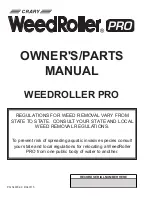
Hinweis
Hartes Anschlagen auf die Kolbenstange kann den Ölbremszylinder zerstören.
· Berücksichtigen Sie, dass der Ölbremszylinder nicht als Stoßdämpfer einge
setzt werden kann.
Steigt die Aufprallgeschwindigkeit über den zul. Wert (
è
Technische Daten),
so können durch den sehr schnell ansteigenden Öldruck Bauteile im Innern
des Ölbremszylinders zerstört werden
· Berücksichtigen Sie, dass während der Betriebsdauer die Viskosität des Hydrau
liköls durch die entstehende Reibungswärme abnimmt.
Der Ölbremszylinder kann somit bei erhöhter Betriebsdauer schneller werden.
Drehen Sie die Dämpfung am Innensechskant
3
in Richtung +" bis der Öl
bremszylinder wieder die gewünschte Geschwindigkeit erreicht hat.
Bei Temperaturen unterhalb 0°C:
· Beachten Sie, dass die Rückstellzeiten des DYHR länger werden (ca.5 ... 12s).
Tiefe Temperaturen bewirken eine Viskositätszunahme des Hydrauliköls.
6
Wartung und Pflege
· Schauen Sie nach Ölverlust am DYHR etwa alle 0,5Mio. Lastwechsel. Dabei
empfiehlt sich eine Kontroll−Messung der Dämpfungslänge (s) des DYHR
(
Fig.2 und Technische Daten). Unzureichende Dämpfungslänge signalisiert
Ölverlust größeren Ausmaßes. Dies erfordert den Austausch des DYHR.
Ansonsten bedarf der DYHR keiner Wartung.
7
Ausbau und Reparatur
· Sorgen Sie für eine Verwertung des DYHR unter Berücksichtigung des Umwelt
schutzes (Problemstoff−Verwertung).
Der DYHR ist gefüllt mit Hydrauliköl. Konstruktionsbedingt kann das Hydrauliköl
nicht nachgefüllt werden.
8
Zubehör
Hinweis
· Wählen Sie bitte das entsprechende Zubehör aus unserem Katalog
è
www.festo.com/catalogue
9
Technische Daten
DYHR−...
16−
20
16−
40
20−
25
20−
50
25−
40
25−
80
32−
60
32−
120
Dämpfungslänge
(s)
[mm]
20
40
25
50
40
80
60
120
Innensechskant
Schlüsselweite
3
[mm]
5
6
Einbaulage
beliebig
Max. Aufprallgeschwin
digkeit
[m/s]
0,3
Vorschubgeschwindig
keit
[mm/s] 0,2
Ū
100
Produktgewicht
(DYHR−...−Y5)
[g]
190
255
360
440 720
900 1380 1810
Umgebungs−
temperatur
1)
[°C]
0
Ū
+80
Rückstellzeit
[s]
0,4
0,8
0,5
1
0,8
1,6
1,2
2,4
Min. Rückstellkraft
F1 [N]
5,4
9
12,5
18
Min. Vorschubkraft F2 [N]
160
250
400
640
Max. Vorschubkraft
2)
[N]
1600
2500
4000
6400
Max. Abweichung der
Kraftrichtung
3)
[°]
±3
±1,5 ±3
±1,5 ±3
±1,5 ±3
±1,5
Max. Energieaufnahme
pro Hub
[J]
32
64
62,5 125
160
320
384
768
pro Stunde
[kJ]
100
150
135
200
220
330
330
495
Werkstoffinformation:
Gehäuse, Muttern
Stahl, verzinkt
Kolbenstange
hochlegierter Stahl, gehärtet
Dichtungen
Nitrilkautschuk
1) Die angegebenen technischen Daten beziehen sich auf Raumtemperatur. Bei höheren Tempera
turen im Bereich 80 °C muss die max. Masse und die Dämpfungsenergie um ca. 50% reduziert
werden.
2)
Entspricht der max. Kraft in der Endlage.
3)
Bei Abweichung der Kraftrichtung ohne Puffer (Zubehör) betreiben.
Fig.5
Hydraulic cushioning cylinder DYHR
en
1
Function and application
The hydraulic cushioning cylinder DYHR is intended for setting a constant, low
insertion speed. It is designed for cushioning forces in an axial direction. The DYHR
also functions as a stop within the permitted load limits.
2
Requirements for product use
Note
Improper handling can result in malfunctions.
· Make sure that all the instructions in this chapter are always observed.
This ensures that the product will perform as intended.
· Compare the limit values specified in these operating instructions with your
actual application (e.g. forces, frequencies, masses, temperatures, speeds).
The DYHR can only be operated in compliance with the relevant safety regula
tions if the load limits are observed.
· Please observe the prevailing ambient conditions. Please observe the regula
tions applicable to the place of use (e.g. those specified by trade associations
and national institutions).
· Use the DYHR in its original state. Unauthorized product modification is not per
mitted.
· Use a buffer type YSRP to reduce impact noise (
è
Accessories).
3
Installation
If the permitted impact force is exceeded:
· Use an additional fixed stop with the hydraulic cushioning cylinder.
· Observe the following points when placing the DYHR in position:
The mass should strike flat against the external fixed stop.
The mass should strike axially against the piston rod
1
(max.force direction
deviation:
è
Technical data).
· Tighten the lock nuts
2
in accordance with the type of mounting selected.
The following tightening torque must be observed here.
DYHR−...
16
20
25
32
Tightening torque
2
[Nm]
35
60
80
100
Fig.6
4
Commissioning
· Observe the permitted values for: (
Fig.2 and Technical data):
The feed force (F
2
)
The resetting force (F
1
).
The feed force must be at least the level of (F
2
), so that the brake speed of
the hydraulic cushioning cylinder is constant and has a high repetition accu
racy. The resetting force (F
1
) may be opposed at maximum by an equally great
force (e.g. applied load of an upstream bolt) on the piston rod
1
so that the
hydraulic cushioning cylinder can still be fully extended.
To adjust the flow control valve (
1. First, turn the flow control valve on the internal hexagon socket
3
in the +"
direction completely shut.
2. Start a test run with the desired feed force. At first, the useful load moves at
minimum speed.
3. Turn the flow control valve on the internal hexagon socket
3
in the " direction
until the load reaches the desired speed. If the end position is set optimally, the
piston rod of the hydraulic cushioning cylinder will move to the end position
(fixed stop) at a constant speed.
5
Operation
Warning
Hot surface temperatures (70°C during operation, depending on the load) can
cause burns.
· Make sure that hot housing surfaces can only be touched if the user is suffi
ciently protected against burning (e.g. by wearing protective gloves).
If the operating conditions are modified:
Note
Changes in the feed force may make the braking mass quicker or slower.
· Turn the flow control valve on the internal hexagon socket
3
in the +" or "
direction until the load reaches the desired speed (
è
Commissioning).






















